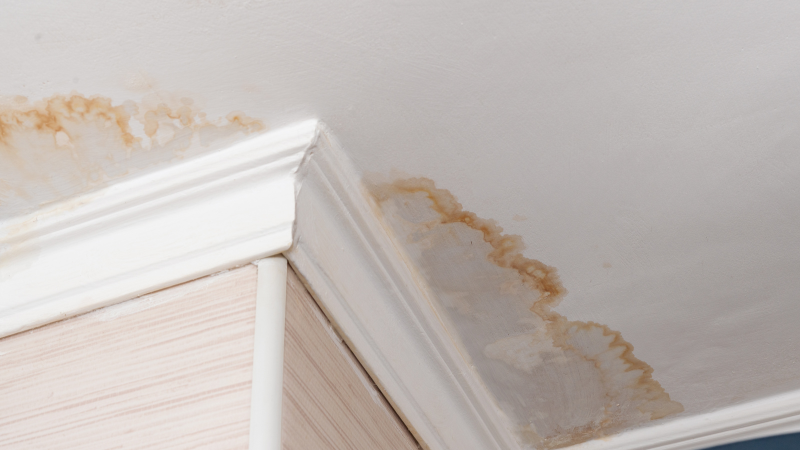Just how to Fix as well as Avoid Bathroom Water Damage
Just how to Fix as well as Avoid Bathroom Water Damage
Blog Article
What are your thoughts and feelings about How to Repair and Prevent Bathroom Water Damage?

The shower room is exceptionally vulnerable for moist build-up as well as possible water damages as a result of the frequent use of water in it. This article offers simple inspection strategies to aid detecting water damages threats.
The constant use water in the washroom makes it very prone for moist accumulation and potential water damage. By examining it routinely, you can decrease water related damages.
The following set of inspections is easy to perform as well as must be done when in every three months in order to keep your restroom in good shape and to prevent possible water problems brought on by the tub, the shower, pipe joints and plumbing, sinks, cabinets, and the toilet
Do not neglect doing these assessments as well as be extensive while performing them. Keep in mind that these straightforward examinations can conserve you a lot of money by offering early signs for water damages
Tub and Shower
The shower and tub need special attention and also upkeep. Inspect the tiles and also change if broken. Make sure that there is no missing out on grout between the floor tiles. Check as well as replace fractured caulking at joints where the walls meet the floor or the bathtub. Blocked drains and pipelines issues will protect against the tub from drying and also may indicate significant problems underneath the bathtub. Seek advice from an expert instantly to stop structural damages. Focus on stainings or soft locations around the bathtub wall surfaces as they may show an interior leak.
Plumbing
Signs for water damages are hard to find because the majority of pipes are mounted inside the walls.
Pay unique interest to floor covering as well as walls wetness and spots as they may suggest an invisible plumbing issue. Check wetness levels in adjacent areas also.
Sinks and also Cabinets
Sinks as well as closets are exposed to dampness and moisture daily as well as are often ignored. Evaluate frequently under the sink and also on the countertop above it. Fix any type of drip in the catch as it might suggest drain issues. Check out the sink, slow draining pipes may suggest an obstructed drain. Replace sink seals if they are broken or loosened.
The Commode
The toilet is a susceptible water joint. Examine the water lines and search for leaks around the bathroom seat, in the pipe, and also under the water tank. If you spot any type of indications of dampness on the flooring around the bathroom, look for leaks in the toilet rim as well as container seals.
Be aware that hanging toilet bowl antiperspirants raises the chances for blockages.
Water Damage Signs In The Bathroom To Avoid Cleanup
Musty smell
This is one of the easiest signs to catch because musty smells are so odorous. The damp, earthy, moldy smell should be a big red flag. The smell will develop when moisture gets trapped in surfaces, and begins to facilitate mold growth. Leaking pipes under cabinets, inside walls, and behind shower fixtures will cause moisture to stay trapped and not dry, which will lead to mold growth and spread. As soon as you notice any musty smells in your bathroom, have it checked for hidden water damage and cleanup signs.
Visible mold
If the smell isn’t there to give it away, sometimes you will actually see mold growth. Finding mold in your bathroom is a serious problem, because mold is very harmful to your health. By the time mold growth is visible, it also means that water damage has already occurred and been present for some time. The only way the mold problem can be resolved is to find the source of the moisture and get it stopped. To safely and adequately remove mold, you need to have professionals handle the remediation. Do not waste any time in getting mold problems addressed, fixed, and sanitized so that you can protect you and your family from the many respiratory symptoms caused by mold exposure.
Damaged floors
Bathroom floors should be able to withstand some exposure to water while still remaining in good condition. However, when excess exposure or water leaks occur, they will begin to damage even the most water-resistant flooring. If you notice any cracking, bubbling, staining, or warping on your bathroom floors, there is probably a water leak somewhere causing the distortion. If you notice areas of the floor have become softer, or even have a spongy feeling, there is probably damage to the subfloor. Subflooring is typically made up of plywood. When plywood is exposed to water or moisture, it will absorb it. Once it has become saturated, the weight of the excess water will cause the wood to swell and soften. Check the floors in your bathroom frequently to catch any of these sings before they lead to damaged subflooring.
Changes on walls
When water leaks behind walls, it will cause changes in the drywall. Peeling plaster, blistering paint, and soggy wallpaper are all good indicators that excess water is building up behind the wall. Water leaking behind drywall will cause it to swell and be soft to the tough. If you start to notice gaps along the trim of your walls, or where tile meets the wall, it could also be a strong indicator that there is a leak behind the wall. Any changes, distortion, or damage on the walls should be evaluated as soon as you notice it to prevent further water damage and cleanup.

I came across that review about How to Repair and Prevent Bathroom Water Damage while browsing on the internet. Appreciated our piece of writing? Please share it. Help somebody else find it. Thanks so much for going through it.
Click On This Link Report this page